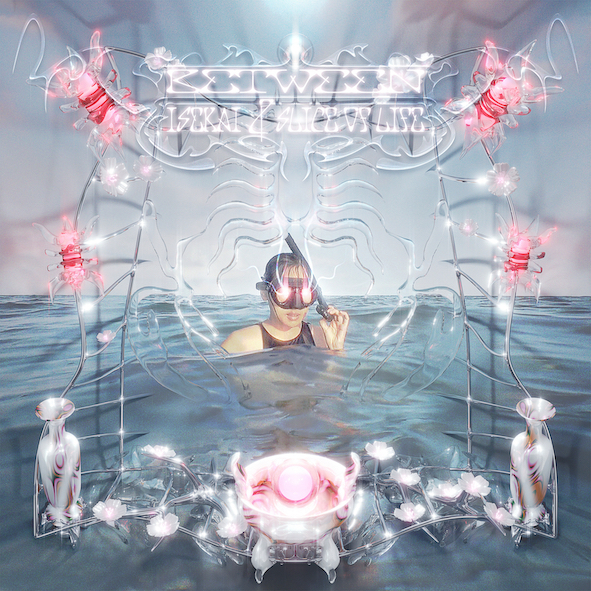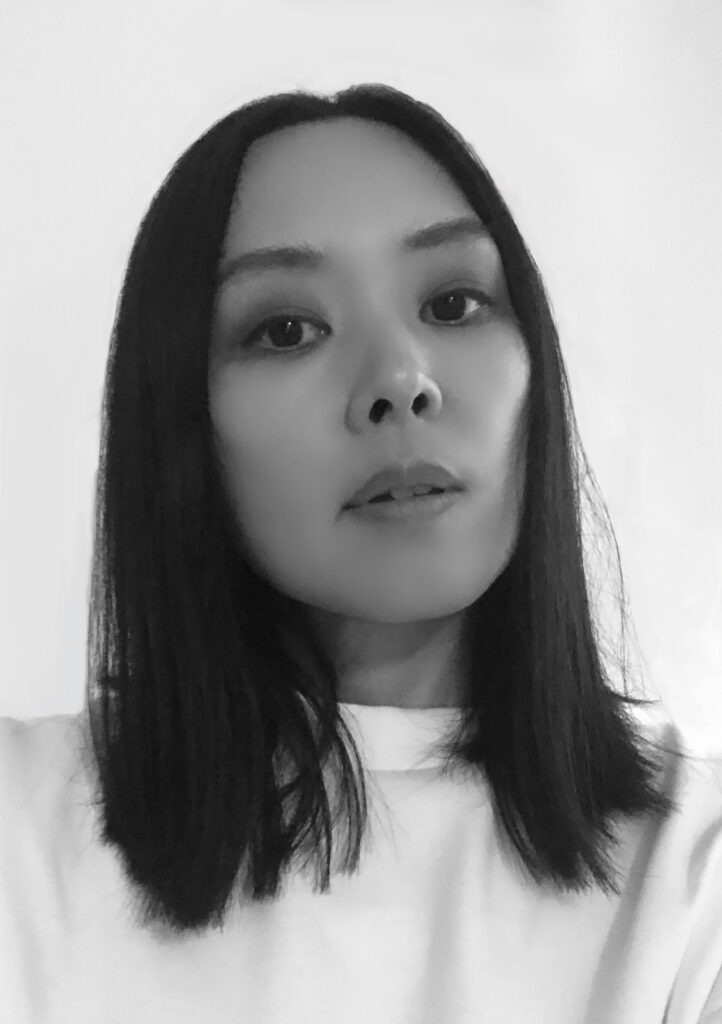When the lockdown occurred in New York, in March 2020, Miho Hatori, who is known as the former vocalist of Cibo Matto, has stayed at her New York home, indulging in watching Japanese anime. Consequently, she discovered the Japanese way of thinking embodied in anime, in which it had motivated her to begin writing her new solo album—And that is how the album, Between Isekai and Slice of Life was born. According to herself, the latest album is a curation album, inspired by the two genres of anime, “Isekai (parallel universe)” and “Slice of Life (everyday life).” The theme of the album is: finding your identity that lies somewhere in between the polarized world. I spoke with Hatori, who currently lives in New York, on ZOOM to learn more about the album imbued with such remarkable theme.
Japanese identities etched in Japanese anime
——When making the album, were you inspired by any anime?
Miho Hatori (from hereunder, “Hatori”): Essentially, I’ve been greatly influenced by Ghibli movies since I was little, and I would say it all started from Nausicaa of the Valley of the Wind. Also, I’ve always been into the Otaku culture, that in the past, I even formed an Otaku study group with my friends in New York.
——What kind of things did you study about Otaku?
Hatori: We’d mainly analyzed the Otaku culture through art. We started the group inspired by Takashi Murakami’s exhibition Little Boy that took place at the Japan Society in New York. Since I saw that show, my perspective towards anime has changed significantly.
——How so?
Hatori: It’s hard to explain, but I began enjoying seeing identities of Japanese people reflected in anime. Portrayal of Japanese identities have always been my fascination and impetus to continue music—and I’ve found out that anime is laden with Japanese identities. Ever since then, anime became more than just a visual content to me.
——What are the things you’ve been discovering from Japanese anime?
Hatori: I guess I’m trying to learn about Japanese people today through anime—That includes the way they talk, their views on love, and ethical theories; and I’ve also noticed that the illustrations and character designs are completely different from those back in the ‘90s and 2000s. I also check out recent popular music as the information will be more limited just with anime, however, if I watch anime with the Otaku viewpoint, I might be able to acquire enough knowledge of the aesthetics of Japanese people now.
——So, what kind of changes do you see in recent Japanese anime?
Hatori: Nowadays, there are anime that depicts feminine men or same-sex love—and it’s just getting more diverse. By the way, my obsession with anime all started from Kimetsu no Yaiba (English title: Demon Slayer.) My old friend was posting on instagram that kids in Japan are going crazy over this anime. So, I checked it out and it hit me hard right off the bat.
——In what way were you impacted by Demon Slayer?
Hatori: I was moved by the story and the fact that kids these days have a great sensibility, resonating with the story. These kids are now living in a world that’s completely different to what it was when we were little. The modern world is abundant with information, yet they seem to have a strong grasp of the complex reality. The kids are touched by the sentiments of Nezuko, who has transformed into a demon, and the kindness of Tanjiro, who exerts to fight through no matter what; and watching in support of the characters’ teamwork—I think this shows that they obtain a very modern sensibility, and that gives me hope for the future.
Being in between “Everyday life” and “Alternative universe.” Being a “Creole.”

——I heard that the title of your latest album, Between Isekai and Slice of Life, comes from the actual anime genres (‘Isekai’ and ‘Slice of Life.’) I was also amazed to find out that “Everyday life” is translated as “Slice of Life” in English.
Hatori: It’s an interesting wording. It’s like a phrase that can only be achieved by English.
——How did you come up with the concept, “Between Isekai and Slice of Life,” for this album?
Hatori: You know, we live under a system that likes to dualize and divide things into two, for example, ‘good and evil’ or ‘men and women.’ However, in real life, the world is more intricate than that, and I’ve lived often wondering, “Is that really the way it’s supposed to be?” While I was anguishing, the poet and philosopher, Edouard Glissant shed light on me.
——Glissant, you mean the philosopher from the Caribbean island, Martinique.
Hatori: The Caribbean has a dark history of slavery and colonization, and I was incredibly moved by the fact Glissant redefined the term “Creole.” “Creole” is about putting yourself in a “State of neither.” That’s a very mature way of thinking and I thought I should reflect that idea in my music. Basically, I want to convey my attitude towards life and belief through music—I’d decided to create this album, believing it’s where I could find my identity.
The latest album is the culmination of works dedicated to myself who has always been an “in-betweener”
——I felt a Caribbean influence in the music of your latest album.
Hatori: Living in New York, Caribbean beat is ubiquitous. In the neighborhood, there are many people who are from Cuba and Puerto Rico; and Woodson [Legrand], the videographer who shot the “Formula X” music video, is also Haitian American—so I’ve been greatly influenced by the people around me. Also, I think there are many things Japanese people can learn from the Caribs.
——Can you elaborate on that?
Hatori: You seen, after the Meiji Restoration, Japan has been moving through history with the motive to catch up and overtake the West, right? But I think it’s about time that we emancipate ourselves from that context and reassess our standpoints. Most importantly, I think Japanese people should manifest their unique ways of thinking and sensibilities to the world. And I think, right now, anime is endeavoring the most in that aspect.
——I see.
Hatori: I was born and raised in Japan, but I’ve always felt that I’m “in-between.” So, it makes sense why New York is a comfortable place for me to live. It’s because, New York is a place where the “in-betweeners” gather. However, there are a lot of people in Japan who feel like they are “in-between.” I often see those symptoms conveyed in Japanese anime. I’m fond of my native land, so I’m hoping for Japan to become a country that is more open to “in-betweeners.”
——Is the song, “Tokyo Story,” which depicts a conversation with a woman who appears to be an AI, written based on a Japanese anime?
Hatori: “Tokyo Story” is a song that is like a future Rakugo (traditional Japanese humorous storytelling.) It was also written imaging 100 years later from Yasujiro Ozu’s Tokyo Story, and initially titled, “Tokyo Story 2053.” So, the song was born from the idea of portraying the future of Tokyo Story, which perfectly captures the atmosphere of the Showa era. Also, I wrote the lyrics based on the story I heard from my friend about her mother. One day, my friend’s mom was asking a direction to a receptionist at a department store, and they were chatting for a while, but afterwards, the mom realized that the receptionist was actually an AI robot. It’s a funny story now, but at that time, my friend’s mom was so disappointed with herself that she wasn’t able to notice that she was talking to an AI the whole entire time. When I heard the story, I was compelled to turn it into a song.
——Nowadays, it seems like there are more and more pop music that are “in-between.”— There are more music that doesn’t fall into a specific genre.
Hatori: It’s fascinating. Young people these days all have different tastes in music, and it’s hard to find those who only listen to rock music. But I think that’s a really good thing, and all the young people around me are like, “‘In-betweeners are nothing special.” Regarding their attitudes toward society, Gen Z kids are well aware that society can’t be changed easily. And, they aren’t cynical about it, but instead, they try to find a fine balance between society and themselves as they grow older. This is pretty much what I wanted to convey in the album. I wanted to encourage like, “Let’s get along with society while living ‘in-between.’”
——Not only in this album, but I feel like you’ve been expressing the state of being “in-between” in your past works.
Hatori: Yeah. After I finished mastering, I thought, “This album is the conclusion of all my past works.” I’ve been looking for the connection between myself and music, and I feel like I’ve finally found it—and I strongly believe this album is going to guide me to the future. It’s become a memorable album.

Miho Hatori
An artist, singer/songwriter, producer who currently resides in New York. In mid ‘90s, Hatori formed a unit band with Yuka Honda, named Cibo Matto, which later signed with Warner Bros. Records; then officially started her career as a professional musician. Since her debut, she has collaborated with a slew of multi-genre artists and creators, and contributed on albums of Beastie Boys, Gorillaz, John Zorn, and other eminent names. After Cibo Matto, she has established various projects relating to identity issues in multimedia format, going beyond the scope of the music industry.
https://mihohatori.com/
Twitter: @mihohatori
Insstagram: @mihohatori
Facebook: @mihohatori
Translation Ai Kaneda


